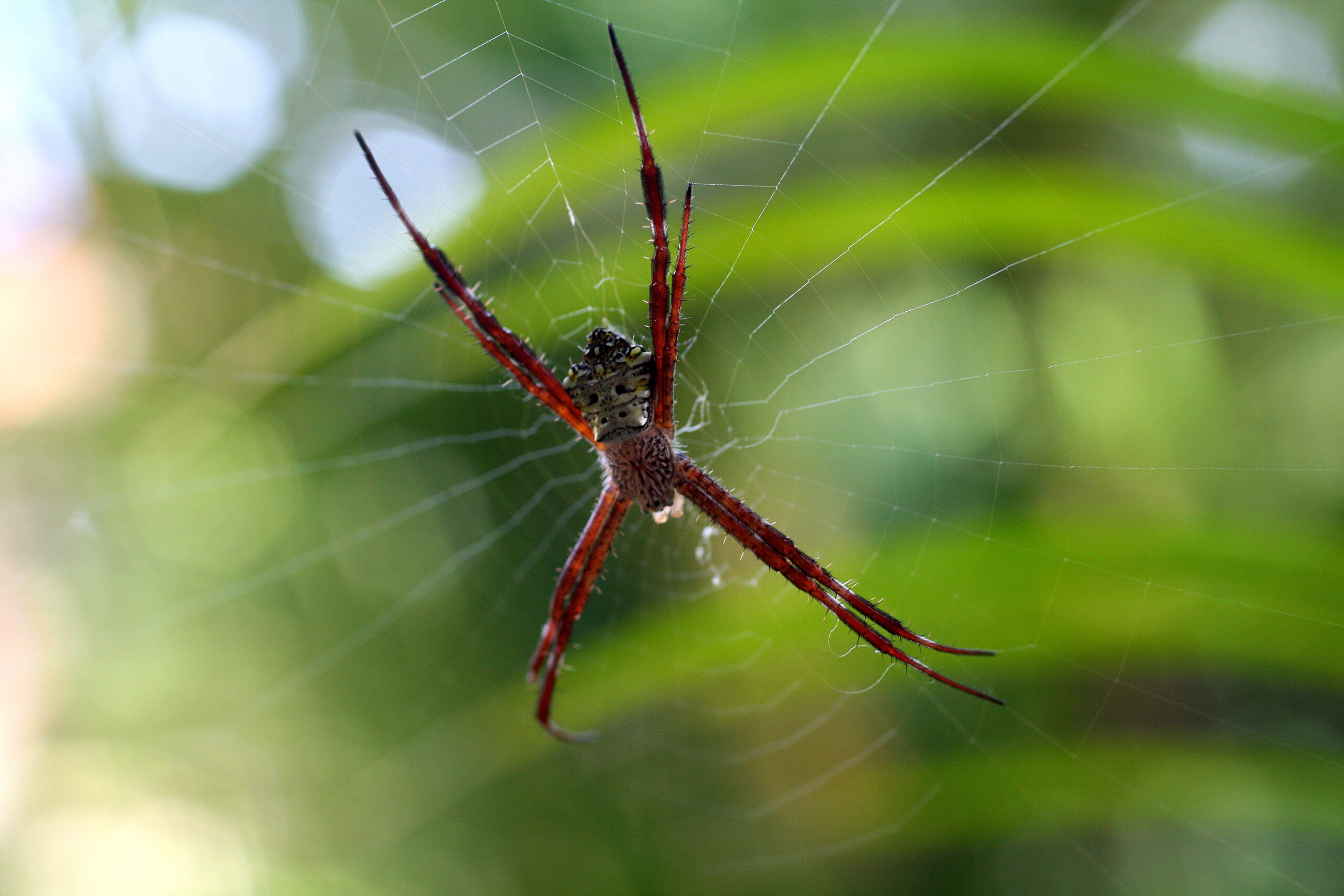| St. Andrew cross spiders (Argiope mangal) get their name from placing their eight legs in pairs to form an X shape. The X is called the St. Andrew’s cross because the saint was martyred on a cross of this shape rather than the conventional cross. Like many other spiders, the male is about half the size of the female, which also builds the nest. In addition to the conventional orb-web, Argiope spiders construct additional white opaque zig-zag lines on their webs. Besides stabilising the web, these zig-zag lines, called stabilimentum, also prevent larger animals, like birds or small mammals, from crashing into the web, much like safety strips on glass doors warn people from walking into and breaking the glass. Interestingly, the silk in the stabilimentum can effectively reflect ultraviolet rays, unlike the silk used in the rest of the web. The pattern mimics those on flower petals that also reflect UV light and serve to guide insects to the flower nectar. Instead of nectar, the insects approaching the spider web are guided to their demise. |






